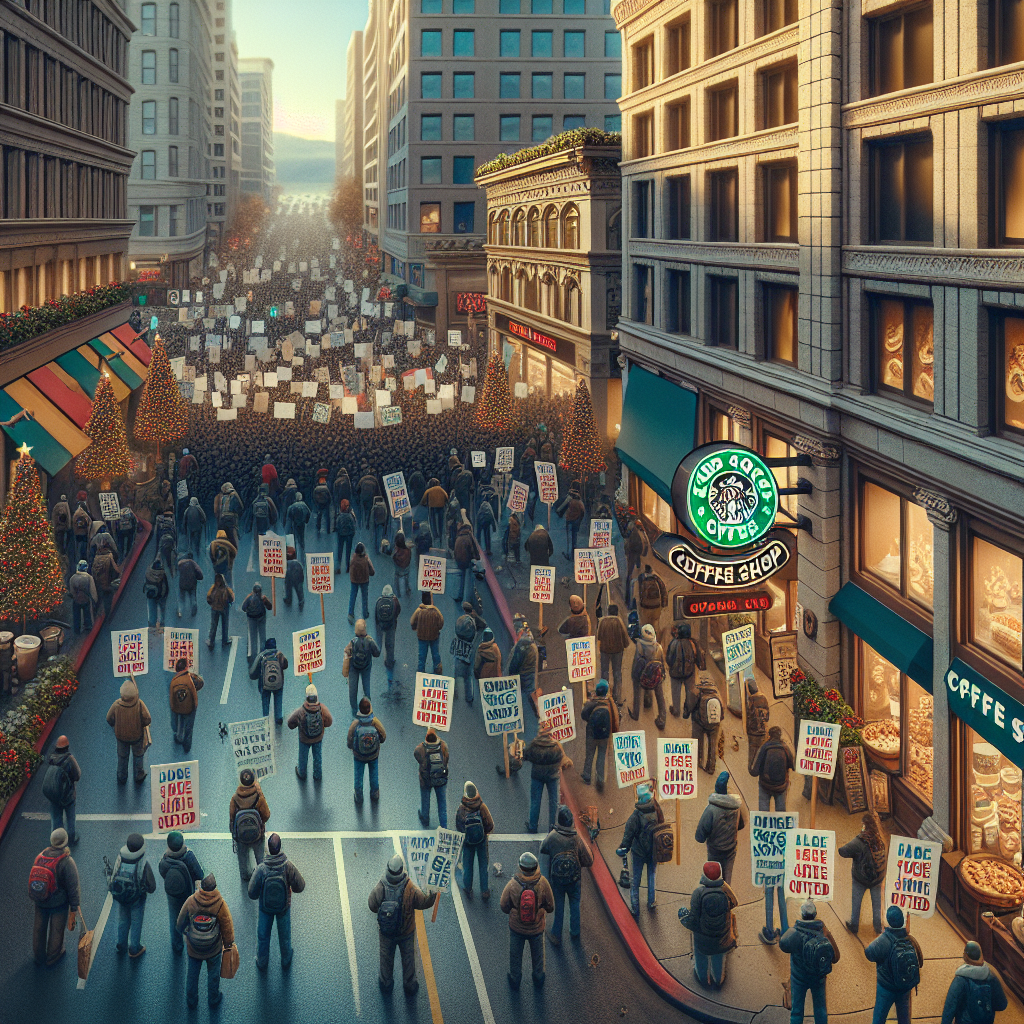During the busiest holiday season, Starbucks in the United States faces mounting pressure as its employees’ union, the “Starbucks Workers United,” announced on Thursday, November 20th, that the strike has expanded to 95 stores in 65 cities across the country, involving approximately 2,000 people. This marks one of the largest strikes in the company’s history.
On the first day of the strike, many participating stores had to close due to staffing shortages. In the days following, about 50 stores continued to be affected by the strike. However, Starbucks emphasized that most impacted stores quickly resumed operations, with less than 1% of stores nationwide experiencing disruptions.
The strike began on November 13, coinciding with this year’s “Reusable Red Cup Day.” Despite the strike, location data from the company and Placer.ai analysis platform indicate that foot traffic has not significantly decreased. Data shows that on that day, foot traffic was 44.5% higher than the daily average from January 1 to November 14 of this year.
Last Friday, CEO Brian Niccol praised the success of this year’s holiday promotions in a memo to employees, highlighting record-breaking sales during promotional events.
He wrote, “We have collectively set new records. Last Thursday was the highest sales day in history for our North American region. And yesterday, we had the highest sales day for ‘Reusable Red Cup Day’ in the company’s history.”
The union has been organizing activities since 2021, claiming to represent over 11,000 employees in more than 550 stores. However, Starbucks stated that the union actually represents around 9,500 employees.
This week, five additional stores applied to join the union, indicating that dissatisfaction among frontline workers is still escalating.
On November 5, the union announced that its members had voted to authorize an indefinite strike starting from the annual “Red Cup Day” to protest a year-long deadlock in labor negotiations with the management.
The union’s demands include presenting new proposals to address core issues, such as improving scheduling hours, raising wages, and addressing hundreds of allegations of unfair treatment by the company. However, since negotiations broke down at the end of last year, the two sides have not resumed substantial discussions. In February of this year, mediation was briefly attempted, but an economic settlement proposal put forth by the company in April was rejected by hundreds of union representatives, prolonging the deadlock.
Despite the escalating strike, the company maintains that holiday operations are running smoothly, with 99% of its 17,000 U.S. stores operating normally. Company spokesperson Jaci Anderson stated, “Many stores that the union had publicly said were going to strike have not closed, or they have reopened.” She believes the strike will not cause “any significant disruptions.”
She reiterated the company’s willingness to return to the negotiation table, saying, “When the union is ready to come back to the table, we are ready to have a dialogue.”
She emphasized that the company offers the most competitive employment opportunities in the retail industry, stating, “The fact is, Starbucks offers the best jobs in retail, with an average hourly wage and benefits for hourly workers totaling $30. People choose to work and stay here. Our turnover is less than half the industry average, and we receive over a million job applications each year.”
This strike comes at a critical time as Starbucks attempts to revitalize the U.S. market. In the last quarter, the company reversed a nearly two-year trend of declining same-store sales. As the holiday season approaches, whether the company can sustain its sales performance remains a focal point of external scrutiny.

